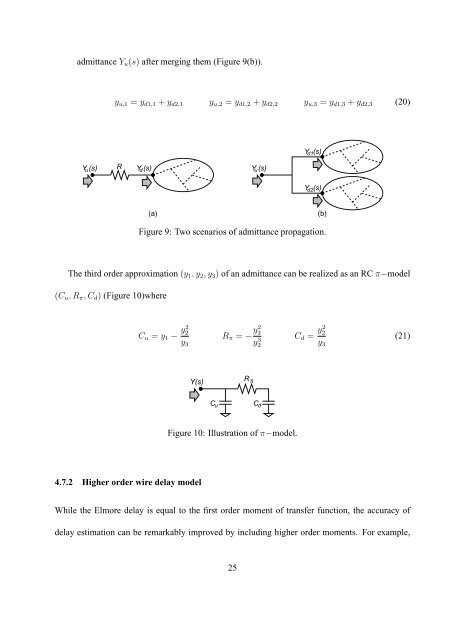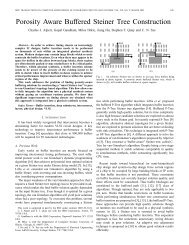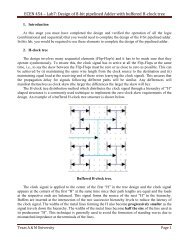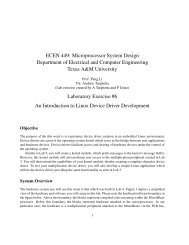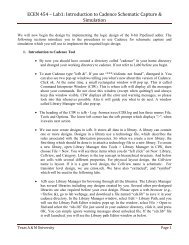Buffer Insertion Basics - Computer Engineering & Systems Group ...
Buffer Insertion Basics - Computer Engineering & Systems Group ...
Buffer Insertion Basics - Computer Engineering & Systems Group ...
Create successful ePaper yourself
Turn your PDF publications into a flip-book with our unique Google optimized e-Paper software.
admittance Y u (s) after merging them (Figure 9(b)).<br />
y u,1 = y d1,1 + y d2,1 y u,2 = y d1,2 + y d2,2 y u,3 = y d1,3 + y d2,3 (20)<br />
Y (s) d1<br />
Y u(s)<br />
R<br />
Y (s) d<br />
Y (s) u<br />
Y (s) d2<br />
(a)<br />
(b)<br />
Figure 9: Two scenarios of admittance propagation.<br />
The third order approximation (y 1 ,y 2 ,y 3 ) of an admittance can be realized as an RC π−model<br />
(C u ,R π ,C d ) (Figure 10)where<br />
C u = y 1 − y2 2<br />
y 3<br />
R π = − y2 3<br />
y 3 2<br />
C d = y2 2<br />
y 3<br />
(21)<br />
Y(s)<br />
R π<br />
C<br />
u<br />
C d<br />
Figure 10: Illustration of π−model.<br />
4.7.2 Higher order wire delay model<br />
While the Elmore delay is equal to the first order moment of transfer function, the accuracy of<br />
delay estimation can be remarkably improved by including higher order moments. For example,<br />
25


